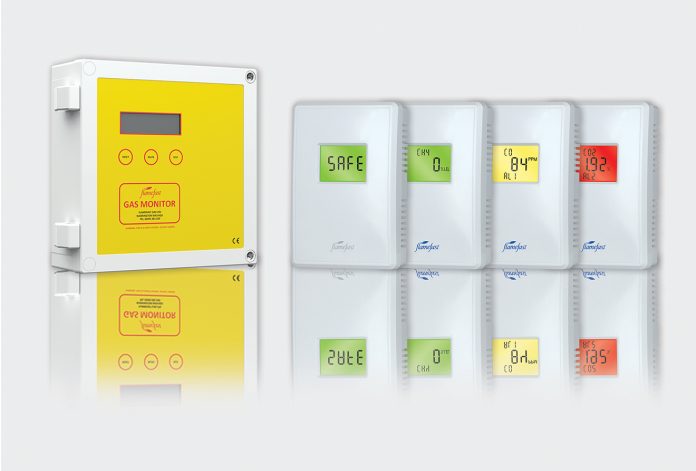Most gas detection systems are simply installed and then forgotten about, and any suggestion that regular checks and calibrations are a strict requirement are often frowned upon.
All fire alarm systems are maintained without fail due to them being a ‘life safety system’ and gas detection system are no different, however often the gases being monitored cannot detected by the human nose, and when they can it may well be too late, so why the stigma?
Whilst some sensors claim to be ‘low-drift’ or ‘maintenance free’, this is usually far from the case or the term is used/taken out of context. The basic principles of the various sensor technologies mean that they are prone to deterioration over time and require regular maintenance to ensure they are operating effectively.
If we take electro-chemical cells as an example, these are typically used for the monitoring of toxic gases such as Carbon Monoxide, and contain a chemical compound that reacts with the target gas. Due to this principle, most toxic sensors will not deviate from Zero and as a result are advertised as ‘low-drift’. However, the zero drift is not the issue!
The primary cause for concern is how the sensor responds when the target has is present. The deterioration of most sensing elements is measured by their output sensitivity and most sensing elements with see a reduction in signal strength of 5-10% per year (as quoted by the manufacturer). This means that the sensor could see a drop in signal strength of approximately 10-20% over two years or 25-40% over five years. The result could be that even if the sensor is exposed to the target gas it may never reach the required alarm level, or if the compound has completely deteriorated or ‘dried up’ it will not respond at all.
Whilst these deterioration figures may be more on the extreme end, they are all quoted as typical figures in ‘clean air’ and other factors must be taken into consideration, such as what the sensors are exposed to. If the sensor is exposed to the target gas the compound depletes more quickly and following a major leak or alarm it is recommended that the sensors be replaced. Solvents can also have a negative effect on the sensors.
It is for all of these reasons that gas sensors must be calibrated at least annually. This is done by applying a sensor specific gas at a known concentration and using it to compensate for sensor deterioration. All gas sensors should also be ‘bump’ tested on a regular basis, which involves applying a test gas to verify that the sensors are alarming correctly. Whilst some sensors may be factory calibrated they should also be bump tested as minimum to ensure that the sensors have not been damaged during transit or installation.
C&F Quadrant is the distributor of Flamefast products, and the company has already supplied and commissioned Flamefast detection systems to a number of projects across Northern Ireland. Based in Belfast, C&F Quadrant have their own dedicated gas detection engineers who are Electrically and Gas Safe qualified, and currently maintain 2000 plus panels per year including plant rooms, commercial kitchens and specialist laboratory sectors.
If you would like to discuss your maintenance requirements then please get in touch.
T: C&F Quadrant on 028 9036 5555.
E: michaelc@cfquadrant.com











